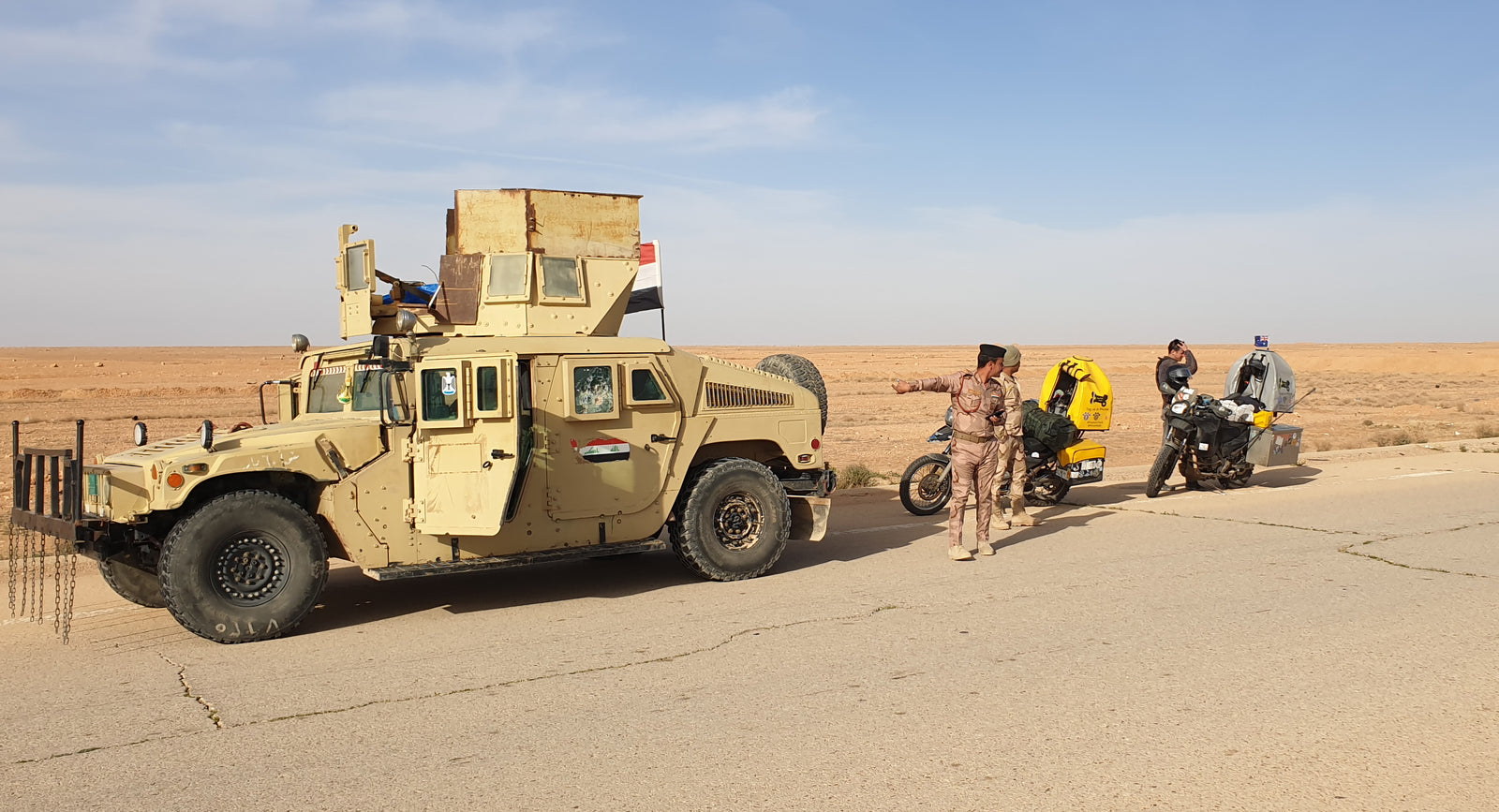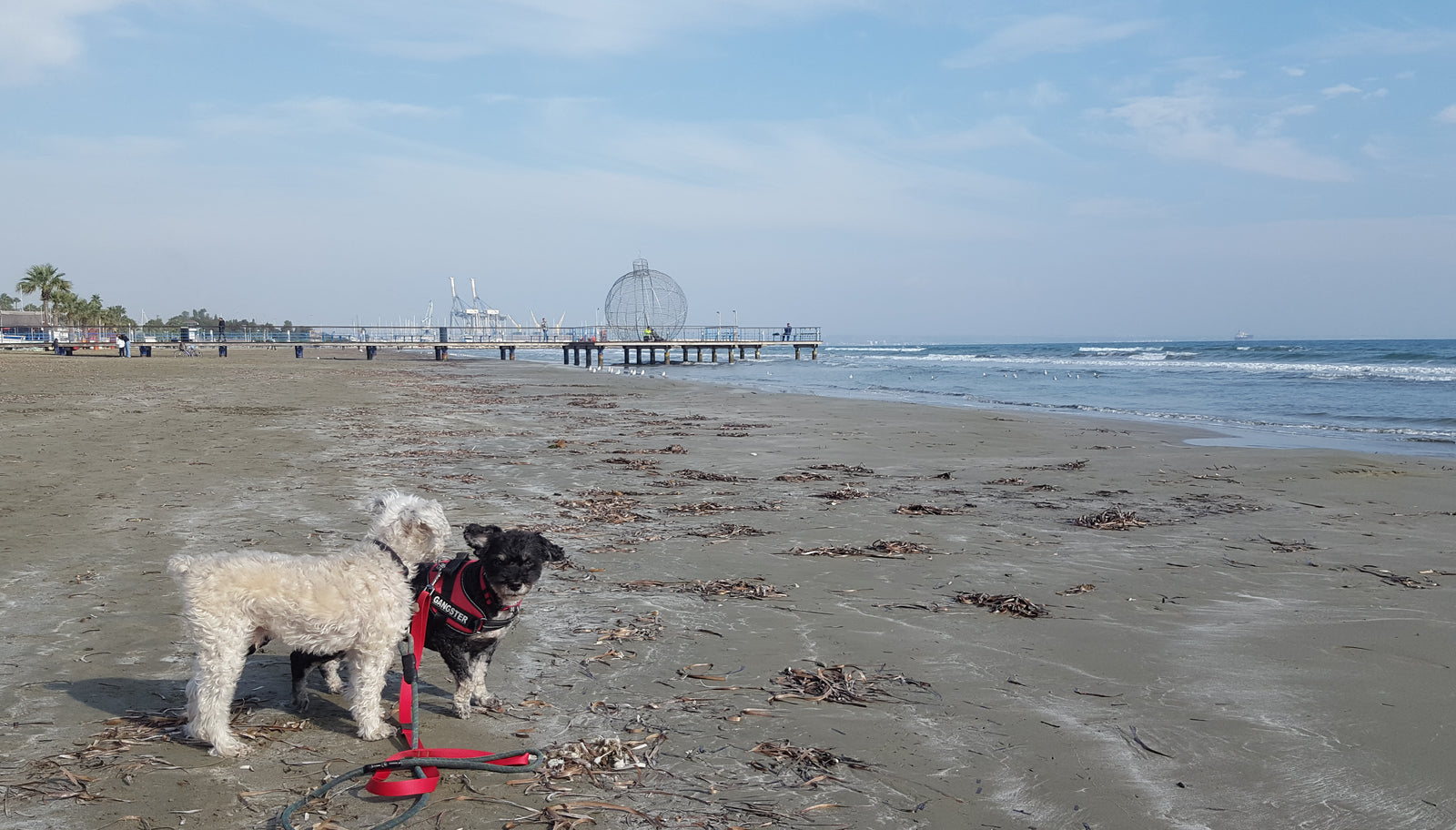Bolivian Altiplano Southwest Circuit
May 08, 2015
Told in the collective first person, jointly from Stu and Janell Clarke's perspective.
Narrated Audio Blog
We entered Bolivia from San Pedro de Atacama, Chile, on the 1st of May 2015. At this entrance to Bolivia there's no town, no shops and not even a sealed road. There is only a small brick hut that services as the migration or border control office. So we spent a few nights in San Pedro, a big tourist town with all the essentials, to stock up on supplies for the road ahead and for Janell, to squeeze in as many hot showers as she could to build up 'cleanliness credit'.

San Pedro sits at around 2600 m elevation and its almost a straight road up the mountain to an elevation of 4800 m to the turn off to Bolivia. There was a mountain bike race running out of San Pedro the day we left and we passed many competitors battling the challenging ascent and cold conditions as we cruised up pass them. Interestingly we noticed our motorbikes gasping for air a little with the quick ascent.
The advice we were given by other motorists about Bolivia was not to exceed 80km/h, not to pass the migration until all paperwork was complete (not even to park up) and be prepared for difficulty purchasing fuel for the motorbikes with a foreign number plate. So of coarse, as we ride up to the migration, Stu parks his motorbike on the edge of the road well in to Chile and Janell rides on past the migration to a parking area on the Bolivian side. The two border control officers come running out yelling at Janell but luckily when she pulls off her helmet and they realise she's a woman they relax. Janell hates silly rules and always makes practical decisions so she flashes a big smile at the officers and before we know it we are inside the office filling out paperwork and having a friendly laugh with the guys who kept indicating for Stu to check the 'female' box, probably because of his long hair. First impressions really count so it was a pleasant surprise to find a sense of humour at our first experience in Bolivia and hopefully a sign of good things to come.


This entry point to Bolivia is most commonly used by 4WD tour operators taking tourists through the Eduardo Avaroa National Reserve of Andean Fauna and Flora and further north in to the Bolivian Altiplano (the Altiplano is an extensive plateau at high altitude shared with Peru, Chile and Argentina but the majority is in Bolivia). The immigration here is only able to stamp a passport for entry of people, vehicles like our motorbikes need to be imported at an Aduana 80km north but its not a problem to organise, all the staff are very friendly. Once the passports were stamped we headed about 10km in to the national park to an abandoned building overlooking Laguna Blanca and a short walk to a hot spring and Laguna Verde. We spent two amazing nights camping here. We learnt some valuable lessons on the first night after leaving our drinking water on the motorbike and woke to two 6L ice blocks in the morning, nothing the midday sun couldn't defrost for us luckily. The second night here a young couple on bicycles, Shereen and Kevin, rode past us. They stopped for a chat and we were glad they decided to stay the night so we could continue exchanging stories and laughing. Of coarse they were up and out early the next day while we waited until 9am when our fingers wouldn't snap off to get up and start packing. Cyclists in this part of the world are seriously tough and we have a lot of respect for their mode of travel.


After our 2 nights camping, we visited Geysers Sol de Manana on our way to the Aduana, this took us up over 5,000m for the first time on our trip and Stuart was very excited. The air was noticeably thin, and as we left the Aduana, Janell dropped her bike on a perfectly flat surface in the stationary position while waiting for the guard to open the boom gate. She was so annoyed at herself having tackled some seriously tough roads and staying upright only to fall over on a sealed patch of road, stationary nonetheless. Stuart went running back, but once there, was too out of breath to be much help, after some time we managed to pick the bike up and get on our way.


You just don't want to rush through this part of the world. Its remote and isolated with desert, mountains and little plant and animal life but it's simply beautiful, it's natural and so foreign to the modern way of life. It took us 8 days in total from entering Bolivia to reach the town of Uyuni. After our two nights camping near Laguna Blanca we kept moving each day but only small distances ranging between 30km to 80km, this allowed us plenty of riding time while stopping to appreciate sites along the way.



The 'road' itself varied between sand and compacted dirt that was either corrugated, rocky or both. Both bikes took some falls, mostly in sand and only in first gear so it was more of a slow descent to one side, no injuries or damages but all part of the fun. Also part of the fun is the opportunity to take loads of silly photos because no-ones around to be embarrassed in front of.



A friend we made en route was Patrik from Switzerland. He was cycling around South America and had a really useful cyclist guide to the Altiplano which he shared with us. It showed the location of camping sites, accommodation, food, water etc.. We met Patrick on our third night when we stayed at a Refugio at Laguna Chalviri. Refugio's are very basic accommodation, you get a bed in shared rooms and you can pay a very small cost for dinner and breakfast which we always did. Patrik arrived after us on this night, having cycled 20km past the town only to have to turn around because the wind was too strong to set up camp. This refugio had a toilet but no running water, therefore no showers. There was a delicious hot spring adjacent which we made use of before it got dark. We continued to bump in to Patrik who covered the same distances as us for the next few days stopping at Laguna Colorado Refugio, Hotel Flamengo at Laguna Hedionda and Sal de Hotel in San Juan de Rosario. Unfortunately Janell woke up sick with a head cold in San Juan and we lost Patrik who continued to the Salar de Uyuni (Uyuni Salt Flat) while we spent an extra night in San Juan so Janell could sleep.



Feeling not too much better but fed up with bed, Janell insisted on continuing, after two nights in San Juan, to the much anticipated Uyuni Salt Flat. This is the largest salf flat in the world and its just mind blowing when you ride on it. According to Wikipedia, the salt flat is over 10,000 square kilometers and sits at an elevation of approximately 3600m. You can see 'islands' protruding from the salt flat horizon but it takes hours to reach them. The surface of the salt flat is as good as a new sealed road, its such a pleasure to ride on after the sand and rocks. Janell was a little nervous at first, expecting the surface to feel like ice because that's what it looks like but soon got her confidence.



There are several 'islands' on the salt flat where you can camp. We decided to camp at Isla Incahuasi, this island has facilities including clean toilets, restaurants and shops. All the 4WD's stop here for photos and shopping, its a pretty island covered in rocks and cactus which we were told are native, not introduced to the island. One of the highlights of the salt flat is seeing sunset and sunrise, we took photos but you really have to be there to appreciate it.

The tourists start swamping the island before the sun is up so there was no chance of a sleep in with our tent set up right next to the information office where everyone has to pay their 30 Boliviano's to use the island. We made porridge for breakfast, shared a coffee with some other campers then back on the salt flat to ride the last 80km to Uyuni where we had planned to spend a night but instead ate lunch then rode another 200km to Potosi.
Leave a comment
Comments will be approved before showing up.
Also in Dog Blog

Iraq
March 30, 2022 1 Comment

Turkey & Azra
March 30, 2022

Cyprus
January 12, 2022
Are you a Dog Person?
Do you Love to Ride?
Click below for more information on how you can take your best friend along on your next biking adventure
© 2025 The Pack Track.
Powered by Shopify